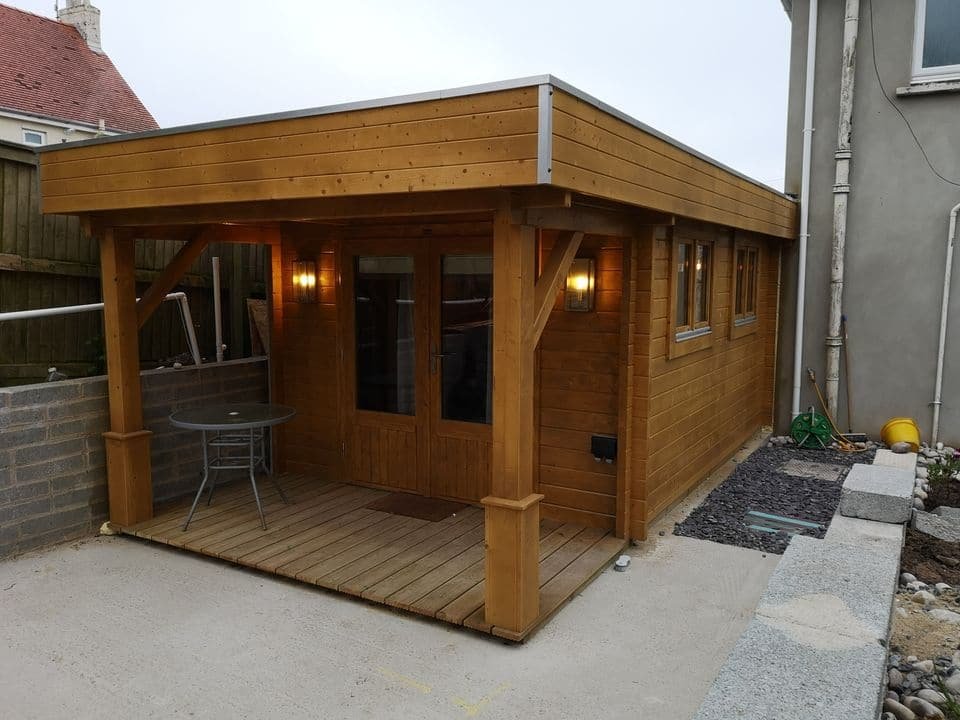Planning Permission
Do I need planning permission for a log cabin in my garden?
The Town and Country Planning rules for ‘permitted development’ changed from 1st October 2008.
Of particular interest is the new section E, covering ‘development within the curtilage of a dwelling house’. This section is relevant to most garden buildings and garages in your garden.
On the positive side, the rules are more relaxed regarding the siting of the garden building close to your house. Whereas previously, it was necessary to ensure a 5 metre separation distance, this requirement will no longer exist.
It also appears that development within gardens of properties in ‘conservation areas’ and ‘areas of outstanding natural beauty’ may be permitted, if sited within 20 metres of the house and subject to the other usual requirements.
However, there are some difficulties to contend with;
The maximum height of the ‘eaves’ of the building will be limited to 2500 mm.
The height of the building must not exceed 2500 mm within 2 metres of a boundary.
ALL buildings with a veranda, balcony or raised platform will need permission.
These notes are simply our observations and should not be considered an official view.
We understand that work that started prior to 1st October 2008 will be accepted under the existing rules.
It follows therefore that if you have been contemplating your log cabin and position in the garden, it might be prudent to check the new rules and if necessary contact your local planning office for guidance.
On the other hand, if you are not ready to push the button, we should remind you that a significant advantage of Keops Interlock log cabins is that they are tailor made and we have the ability to design the log cabin to comply with the new rules, in most situations.
For further reading please follow the link to the Government Planning Portal and check the section on outbuildings.
Disclaimer: This is an introductory guide and is not a definitive source of legal information. If you have any doubts, you should contact your local planning authority before undertaking any work.
It is recommended that you obtain a copy of an official guidance document titled ‘Planning- A guide to householders’ published by ODPM (Office of the Deputy Prime Minister). You can obtain this from your local planning office or a download is possible.
Section B of that document relates to garden structures.
In general terms you are exempt from needing planning permission for your log cabin if you can satisfy the following criteria:-
It is to be sited in the garden of a detached or semi detached property.
The property is not in a designated area such as an area of outstanding natural beauty, National Park or similar category.
The property is not a listed building.
The outbuilding is not forward of the principle elevation of the house.
The cabin will not be above 4m in height.
Total area covered by buildings will not exceed half of the garden.
The cabin is not to be used commercially (home office is usually acceptable if it does not detract from the main use of the property).
The cabin is not to be used as a dwelling.
There are no other covenants that prevent you from exercising your permitted developments rights.
Garden structures may include swimming pools, animal shelters, tennis courts and so on. The size of the garden structure does not appear to be relevant to planning exemption but it does have an influence on whether or not building regulations approval is necessary and/or the cabins position relative to boundaries. Please see our section on Building Regulations.
Before you read any further….some important notes.
The permitted development rules shown apply to houses. Flats, maisonettes or other buildings are not included. You should also check with your Local Planning Authority if permitted development rights apply as they may have been removed.
Permitted development rights may also have been restricted if your house is listed or in a designated area. Again check with your Local Planning Authority in these circumstances.
This guide relates to planning for England only. The policy in Wales or elsewhere may be different.
Did you know…
Here at Keops we can create technical CAD log cabin plans and elevation drawings suitable for planning permission at a cost of £95.00.
Speak to a member of our team to learn more.

